Why are recessions a great time for organizations to evaluate the opportunity of agile?
I think it’s a bit deeper than simply exploring agile.
The best time to invest in your marketing, sales efforts, people, and processes is when the world is a deeply troubled place. It’s when things go wrong that you need to explore how best to leverage what you have and align that with value creation for customers.
Agile is simply a great framework and tool to help you do that effectively.
So, it is in times of turmoil that we often discover our deepest opportunities for growth and continuous improvement .
The Agile Conversation
Agile is simply about the ability to adapt and respond to market circumstances and conditions more effectively than your competitors.
It’s about the ability to capture and create value for customers, continuously, in ways that truly delight those customers, which leads to increased customer satisfaction , retention, and acquisition.
If you’re simply looking for a different way of working, agile isn’t the solution for you.
It needs to solve a problem or create an opportunity for you in a way that traditional project management and conventional product development simply can’t match.
Agile helps provide a framework that helps teams identify whether they have the necessary cross-functional skills to deliver a great product, and to be adaptive and responsive to markets, and if not, develop a plan to acquire those skills.
It’s also about deep market learning and customer sensing to focus on producing the most valuable outcomes for customers and the organization. Empirical Process Control is all about learning through data, feedback, and evidence and using that to inform what you will attempt next.
In complex environments, we don’t know what we don’t know.
We don’t know if customers will buy this idea. We don’t know if this concept will work. We don’t know how to build the solution.
Empirical Process Control theory allows us to develop a hypothesis, design a quick and cheap experiment to validate whether the idea is feasible or not, and creates rapid feedback loops that we can use to inform what we should persist with and what we should abandon.
Customers don’t see value in the idea, magic, scrap the project. Customers like the minimum viable product and are prepared to invest in it, great, let’s ship that and improve the product with valuable features in each short, sharp sprint.
Traditional Management
The processes and systems created in the industrial era were designed to slow things down as much as possible. The market moved and evolved very slowly and so the architects of those systems wanted to capture as much time as possible to milk that metaphorical cow.
In many ways, this is why it’s so hard to move with agility in today’s markets.
We are just hamstrung by processes, controls, and a culture of business management that was designed for a hundred years ago.
A time where the manager was the smartest person in the room, and his or her boss was the smartest person in the room above them, and so forth.
Orders flow down the organizational chart and the workers are the ones left to execute exactly as they are told, when they are told, how they are told.
A 21st Century environment works completely differently.
The leadership team may be experts at management and control, but they aren’t the wizards who build solutions or solve complex problems. The people on the ground are those things, and so you want to push decision-making about the problem or solution down to those experts.
You want the most skilled, experienced, and talented minds addressing the problem rather than relying on a hierarchy that has less skills and capability the higher you climb that ladder.
Organizational Change.
In the traditional organization, something needs to be so painful for the people at the coalface that they escalate it to their boss. That, in turn, has to be equally as painful for that manager for them to escalate it to their boss.
And so forth, until finally it reaches the leaders, people who are miles away from customers and markets. If it’s painful and inconvenient enough, you might get a decision to change, which then flows down the hierarchy in the form of an order or policy shift.
It’s slow. It’s painful. It requires a great deal of discomfort before the right decision is made.
In an agile environment, people are deeply engaged in the work they are doing and the problems that they are solving. As they identify an opportunity or threat, they involve leadership teams in recommendations for change supported by a business case for that change, which then results in change.
It’s quick, relatively painless, and helps the team build momentum.
The primary focus of agile is to create products and solutions that truly delight customers in a way that aligns with organizational and team objectives. We come to work because we want to do a great job. We come to work because we have purpose. We come to work to make a difference.
Investing in Agile.
For me, personally, I cant think of a better time to invest in the capability of your people and organization than times of recession and discomfort.
I can’t think of a better way to turn the ship around and evolve into a highly adaptive, responsive organization that thrives in times of uncertainty and complexity.
Empirical Process Control is about developing a theory, and testing whether that theory holds true or not. If it doesn’t, abandon it. If it does, pursue it, and evolve with each learning and production cycle.
Do this with your organization. Develop a hypothesis about what Agile could mean for you. Design an experiment or run a pilot to test whether those assumptions are true, and if they are, persist with the next evolution.
Highlight what isn’t working and develop a plan for addressing those issues. Identify what is working well and build on that success with your next hypothesis.
So, you don’t need to turn the entire organization on a dime.
You can invest in incremental and iterative growth. Small, rapid cycles of change that produce the outcomes you want and help you avoid the outcomes you don’t want.
Simple. Effective. Scientific.
About NKD Agility
Naked Agility is an #agile consultancy that specializes in #scrumtraining, #agilecoaching and #agileconsulting to help teams evolve, integrate, and continuously improve.
We recognize the positive impact that a happy AND inspired workforce can have on customer experience, and we actively help organizations to tap into the power of creative, collaborative, and high-performing teams that is unique to #agile and # scrum environments.
If you are interested in #agiletraining, visit https://nkdagility.com/training/
If you have identified the need for #agilecoaching and #agileconsulting, visit https://nkdagility.com/agile-consulting-coaching/
We would love to work with you.
#scrum #agile #scrumteam #agileprojectmanagement #agileproductdevelopment #projectmanagement #productdevelopment #agilecoach #agileconsultant #agiletraining #scrumtraining #scrumorg

























